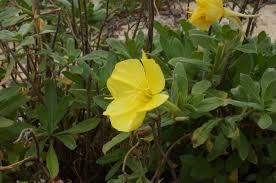By Jason Daley
An excerpt from SMITHSONIAN.COM
JANUARY 18, 2019
A new study suggests the plants are listening, and some flowers even sweeten up their nectar when they sense a pollinator approaching.
Plants have withstood the test of time, so they must react to such a crucial sensory tool as well, right? This question is the essentially the basis of Tel Aviv University evolutionary theoretician Lilach Hadany’s interest in pursuing the new study, reports Michelle Z. Donahue at National Geographic.
Since sound is propagated as a wave, it doesn’t always take the complex set of ear bones and hair cells found in mammal ears to detect the presence of sound, just the ability to perceive vibrations.
To test the idea, Hadany and her team looked at the relationship between bees and flowers. The team exposed the beach evening primrose, Oenothera drummondii, to five types of sound: silence, the buzz of a bee from four inches away, and low, intermediate and high pitched sounds produced by a computer, Donahue writes. They then measured the amount of nectar that the flowers produced after being exposed to the sound.
Blossoms exposed to silence as well as high-frequency and intermediate-frequency waves produced the baseline amount of sugar expected in their nectar. However, the blooms exposed to the bee’s buzz and low-frequency sounds bumped their sugar content up 12 to 20 percent within three minutes of being exposed to the hum. In other words, when they “heard” a bee approaching, they sweetened their nectar.
Perhaps this isn’t too surprising because—although flowers come in all shapes and sizes—so many are actually rather ear-shaped, with petals forming conical or cupped shapes.
“We were quite surprised when we found out that it actually worked,” Hadany tells Donahue. “But after repeating it in other situations, in different seasons, and with plants grown both indoors and outdoors, we feel very confident in the result.”
“The results are amazing,” he says. “They’re the most convincing data on this subject to date. They’re important in forcing the scientific community to confront its skepticism.”
“We have to take into account that flowers have evolved with pollinators for a very long time,” Hadany tells Donahue. “They are living entities, and they, too, need to survive in the world. It’s important for them to be able to sense their environment—especially if they cannot go anywhere.”

